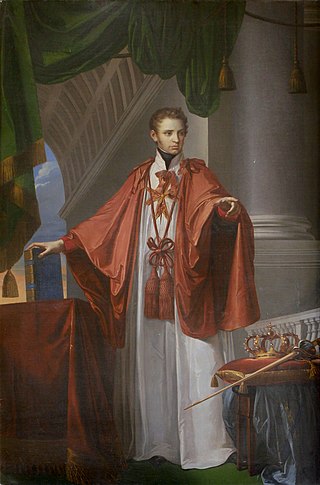
Leopold II was Grand Duke of Tuscany from 1824 to 1859. He married twice; first to Maria Anna of Saxony, and after her death in 1832, to Maria Antonia of the Two-Sicilies. By the latter, he begat his eventual successor, Ferdinand. Leopold was recognised contemporarily as a liberal monarch, authorising the Tuscan Constitution of 1848, and allowing a degree of press freedom.

The Distinguished Order of the Golden Fleece is a Catholic order of chivalry founded in Bruges by Philip the Good, Duke of Burgundy, in 1430, to celebrate his marriage to Isabella of Portugal. Today, two branches of the order exist, namely the Spanish and the Austrian Fleece; the current grand masters are King Felipe VI of Spain and Karl von Habsburg, head of the House of Habsburg-Lorraine, respectively. The Grand Chaplain of the Austrian branch is Cardinal Christoph Schönborn, Archbishop of Vienna.

Schloss Ort is an Austrian castle situated in the Traunsee lake, in Gmunden, 19 kilometres (12 mi) from Vöcklabruck, the gate to Salzkammergut.

Archduke Leopold Maria of Austria, Prince of Tuscany was the second son of Archduke Leopold Salvator, Prince of Tuscany and Infanta Blanca of Spain. At the fall of Habsburg monarchy he remained in Austria and recognized the new republic in order to marry Dagmar, Baroness von Nicolics-Podrinska. The couple had one daughter. After divorcing his wife in 1931, Leopold eventually emigrated to the United States where he became a naturalized American citizen under the name Leopold Lorraine, and where he remarried. He died in 1958 in Connecticut.
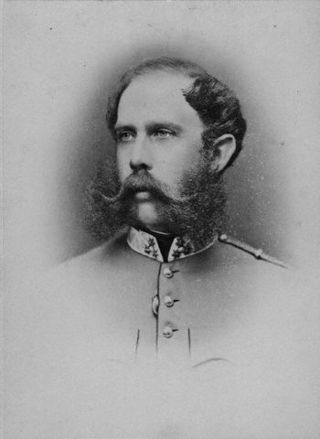
Archduke Karl Ludwig Josef Maria of Austria was the younger brother of both Franz Joseph I of Austria and Maximilian I of Mexico, and the father of Archduke Franz Ferdinand of Austria (1863–1914), whose assassination ignited World War I. His grandson was the last emperor of Austria, Charles I.
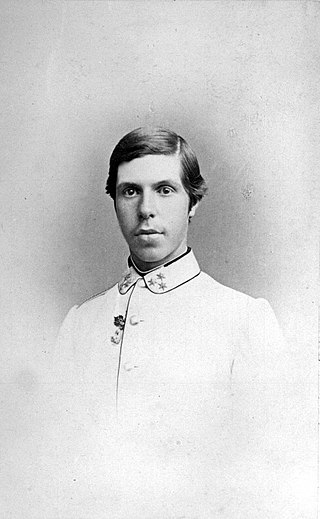
Archduke Ludwig Salvator of Austria, was an Austrian archduke of the House of Habsburg who became known as a champion for Majorca's wildlife, in an era when the term "conservation" was not highly regarded. The Balearic Islands commemorated the centenary of the death of Archduke Ludwig Salvator during 2015.
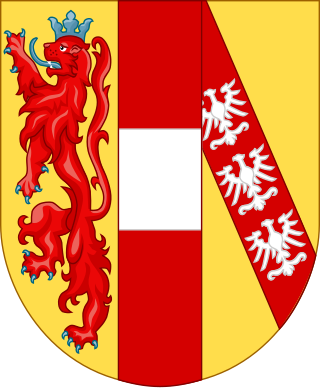
The House of Habsburg-Lorraine originated from the marriage in 1736 of Francis III, Duke of Lorraine and Bar, and Maria Theresa of Austria, later successively Queen of Bohemia, Queen of Hungary, Queen of Croatia and Archduchess of Austria. Its members are the legitimate surviving line of both the House of Habsburg and the House of Lorraine and inherit their patrimonial possessions from their female line of the House of Habsburg and from the male line of the House of Lorraine.

Archduke Karl Pius of Austria, Prince Royal of Hungary and Bohemia, Prince of Tuscany, known as Carlos Pío de Habsburgo-Lorena y de Borbón in Spanish, was a member of the Tuscan branch of the Imperial House of Habsburg and a Carlist claimant to the throne of Spain under the assumed name of "Carlos VIII". He was the tenth and youngest child of Archduke Leopold Salvator of Austria, Prince of Tuscany and Infanta Blanca of Spain.

The Order of Saint Stephen was an order of chivalry founded in 1764 by Maria Theresa. In 1938, Miklós Horthy took the rights and activities of Grand Master as Regent of Hungary. The name of the Order changed to the Royal Hungarian Order of Saint Stephen. The Order was terminated at the time of the proclamation of the Second Hungarian Republic in 1946. It was recreated in 2011 as the Hungarian Order of Saint Stephen, and to this day remains the highest order in Hungary.

Archduke Karl Salvator of Austria, was a member of the Tuscan branch of the House of Habsburg.

Archduke Franz Salvator of Austria was the son of Archduke Karl Salvator of Austria and Princess Maria Immacolata of Bourbon-Two Sicilies. He married Archduchess Marie Valerie in 1890, though, due to Marie Valerie's death in 1924, remarried in 1934 to Baroness Melanie von Riesenfels.

Archduke Leopold Salvator, Prince of Tuscany, was the son of Archduke Karl Salvator of Austria and Princess Maria Immaculata of Bourbon-Two Sicilies.

Infanta Blanca of Spain was the eldest child of Infante Carlos, Duke of Madrid, Carlist claimant to the throne of Spain and his wife Princess Margherita of Bourbon-Parma. Blanca was a member of the House of Bourbon and - according to the Carlists - an Infanta of Spain by birth. In 1889 she married Archduke Leopold Salvator of Austria, Prince of Tuscany. The couple had ten children. The family left Austria after the end of the Monarchy and finally settled in Barcelona. When the male line of Blanca's family died out at the death of her uncle, Alfonso Carlos, Duke of San Jaime, some of the Carlists recognized her as the legitimate heiress to the Spanish throne.

Archduke Hubert Salvator of Austria, Prince of Tuscany was a member of the Tuscan line of the House of Habsburg and Archduke of Austria, Prince of Tuscany by birth.

Princess Rosemary of Salm-Salm was a member of the princely House of Salm-Salm. Through her marriage to Archduke Hubert Salvator of Austria, Rosemary was a member of the Tuscan line of the House of Habsburg-Lorraine.

Princess Maria Antonia of the Two Sicilies was the Grand Duchess of Tuscany from 1833 to 1859 as the consort of Leopold II. In her signature, she used Maria Antonietta.
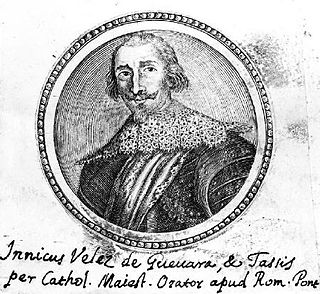
The Oñate treaty of 6 June 1617 was a secret treaty between the Austrian and Spanish branches of the House of Habsburg.

Archduke Rainer of Austria was a member of the House of Habsburg-Lorraine, a member of the Tuscan branch of the Imperial House of Habsburg, an Archduke of Austria and Prince of Tuscany by birth. He was the eldest son Archduke Leopold Salvator of Austria, Prince of Tuscany. He served as officer in the Austrian army during World War I. At the fall of the Habsburg dynasty, he remained in Vienna and worked for a time as taxi driver. He died unmarried at the age of 34 from blood-poisoning.

The Red Prince is a 1954 Austrian-West German historical drama film directed by Hans Schott-Schöbinger and Franz Antel and starring Inge Egger, Peter Pasetti and Richard Häussler. It is based on the story of Archduke Johann Salvator of Austria.
Friedrich Weissensteiner was an Austrian historian and writer.

















